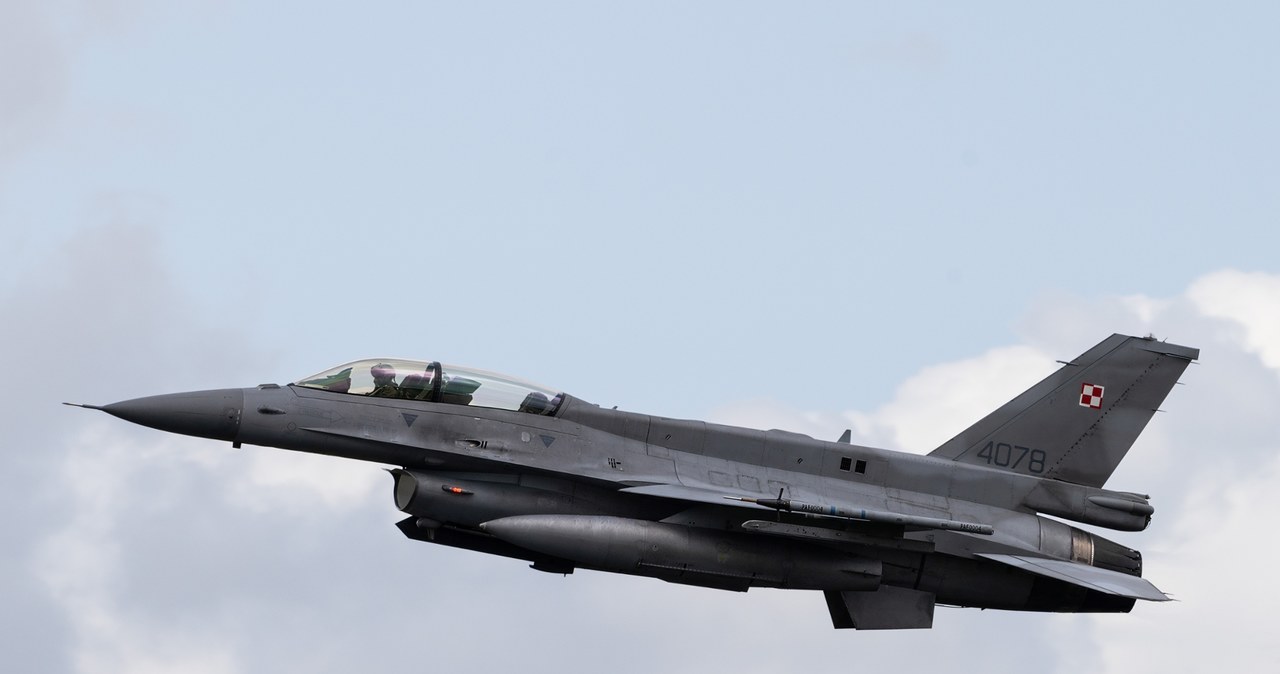
DeepSeek Pulls Rug Out On Nvidia, ASML
There is only one topic on traders’ minds this morning that threatens to upend the multi-year AI bull trend driving chip stocks to record highs: the (extremely) cheaper Chinese DeepSeek response to OpenAI’s ChatGPT, as noted in an overnight piece titled „Goldman Asks If China’s DeepSeek is AI’s Sputnik Moment.”
Bloomberg’s Mark Cudmore said earlier that the emergence of DeepSeek is terrific news for global growth and productivity. However, he cautioned that the new free, open-source large-language model undermines the massive premium paid for AI research and development by US mega-cap stocks, warning that this development could serve as a catalyst to end 15 years of US stock market exceptionalism.
Perhaps the pin that bursts the AI stock bubble in the US. If so, watch out below…
deepseek better not be the real deal… pic.twitter.com/qv6vtINl2d
— zerohedge (@zerohedge) January 26, 2025
The buzz over DeepSeek has stoked questions about the tens of billions of money big tech firms have spent on AI models and data centers, along with broader trends to upgrade aging power grids.
As a result, chip designer Nvidia plunged 12% in premarket trading in New York, while Netherlands-based chip companies ASML and ASM International tumbled 10% and 15%, respectively. In Asia, Japanese chip-related stocks traded lower.
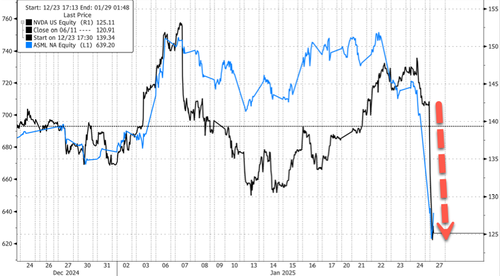
Bitcoin was hammered lower.
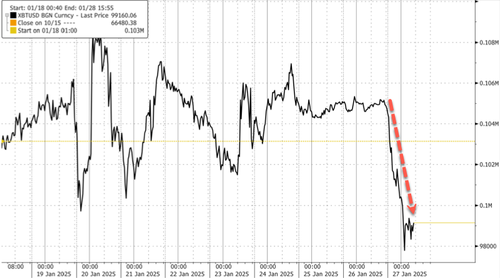
For Wall Street analysts, the developments raise serious questions about elevated valuations of AI-related stocks and Silicon Valley’s business model of massive research.
„It does put a lot of scrutiny at the level of valuations,” said Benedicte Lowe, equity derivatives strategist at BNP Paribas Markets 360, adding, „We are quite positive on US tech stock sector. But it puts pressure on the outlook and is a turning point for the companies at this stage in the cycle.”
Jefferies analysts told clients, „Concerns have immediately emerged that it could be a disruptor to the current AI business model, which relies on high end chips and extensive computing power and hence energy.”
Goldman’s Jeremy Elster offered his take on DeepSeek and market reaction:
Only one topic to start the week, threatening to undermine much of the narrative driving eu industrials and cap goods ytd… DeepSeek .. I will defer to Privo’s take on the background this morning: „what makes DeepSeek important is not necessarily that it’s Chinese or rapidly ascended to one of the most popular downloads in the Apple App Store but that it appears quite a fundamental advancement in the efficiency of AI technology. For a lot of complicated reasons it’s basically a huge upgrade to effectiveness of inference. By some measurements, 40-50x more efficient than other models. If you can do more with less it naturally leads the question to whether you need so much capacity„…(note) => In industrials / cap goods, reactions this morning are mostly of the „shoot first” variety towards capex and power equipment plays in relevant and adjacent verticals. GSXEACDC -6% is unsurprisingly most impacted (SU most datacentre exposed,- see full list of exposures in piece from Friday here: link). Also seeing the contagion to semi-cap (Atlas Copco, VAT Group).
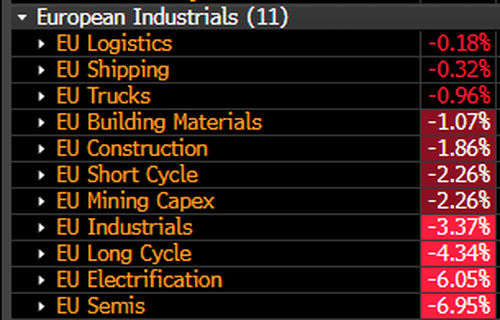
In a separate Goldman note, analyst Francois Theis market outlined the DeepSeek reaction sent „Asian AI ecosystem in full profit taking mode (GS Japan AI -3.08%, GS Asia Power Grid -3.3%) and Nasdaq down significantly premarket.”
Theis pointed out one key implication of the DeepSeek development: „First of all remains around Softbank’ Stargate return on investments and capex efficiency (and hence beneficiaries around supply chain and energy requirements).”
Q&As about DeepSeek (courtesy of Bloomberg):
How does DeepSeek R1 compare to OpenAI or Meta AI?
Though not fully detailed by the company, the cost of training and developing DeepSeek’s models appears to be only a fraction of what’s required for OpenAI or Meta Platforms Inc.’s best products. The much better efficiency of the model puts into question the need for vast expenditures of capital to acquire the latest and most powerful AI accelerators from the likes of Nvidia Corp. That also amplifies attention on US export curbs of such advanced semiconductors to China — which were intended to prevent a breakthrough of the sort that DeepSeek appears to represent. DeepSeek says R1 is near or better than rival models in several leading benchmarks such as AIME 2024 for mathematical tasks, MMLU for general knowledge and AlpacaEval 2.0 for question-and-answer performance. It also ranks among the top performers on a UC Berkeley-affiliated leaderboard called Chatbot Arena.
What’s raising alarm in the US?
Washington has banned the export of high-end technologies like GPU semiconductors to China, in a bid to stall the country’s advances in AI, the key frontier in the US-China contest for tech supremacy. But DeepSeek’s progress suggests Chinese AI engineers have worked their way around the restrictions, focusing on greater efficiency with limited resources. While it remains unclear how much advanced AI- training hardware DeepSeek has had access to, the company’s demonstrated enough to suggest the trade restrictions have not been entirely effective in stymying China’s progress.
Another cause for concern.
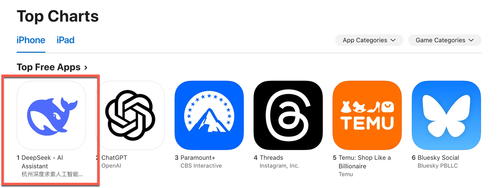
Srini Pajjuri, semiconductor analyst at Raymond James, told clients, „DeepSeek clearly doesn’t have access to as much compute as U.S. hyperscalers and somehow managed to develop a model that appears highly competitive.”
Here’s our latest reporting on DeepSeek:
-
China’s DeepSeek AI Moves The Capital Of Tech From Palo Alto To Hangzhou
-
China’s DeepSeek Bombshell Rocks Trump’s $500BN AI Boondoggle
-
Goldman Asks If China’s DeepSeek is AI’s Sputnik Moment
The whole global AI ecosystem will be in profit-taking mode on Monday morning.
Tyler Durden
Mon, 01/27/2025 – 07:20

